Dying hercules Stock Photos and Images
 Dying Hercules, painting in oil on canvas by Samuel Finley Breese Morse, 1812 Stock Photohttps://www.alamy.com/image-license-details/?v=1https://www.alamy.com/dyinghercules-painting-in-oil-on-canvas-by-samuel-finley-breese-morse-1812-image482495146.html
Dying Hercules, painting in oil on canvas by Samuel Finley Breese Morse, 1812 Stock Photohttps://www.alamy.com/image-license-details/?v=1https://www.alamy.com/dyinghercules-painting-in-oil-on-canvas-by-samuel-finley-breese-morse-1812-image482495146.htmlRM2K0YFDE–Dying Hercules, painting in oil on canvas by Samuel Finley Breese Morse, 1812
 Dying Hercules. circa 1812. DyingHercules Stock Photohttps://www.alamy.com/image-license-details/?v=1https://www.alamy.com/dying-hercules-circa-1812-dyinghercules-image184972766.html
Dying Hercules. circa 1812. DyingHercules Stock Photohttps://www.alamy.com/image-license-details/?v=1https://www.alamy.com/dying-hercules-circa-1812-dyinghercules-image184972766.htmlRMMMX6J6–Dying Hercules. circa 1812. DyingHercules
 Hercules frees Deianeira from the centaur Nessus, Hercules and Deianira with the dying Nessus, Adriaen de Vries (after), 1600 - 1625, bronze (metal), h 78.5 cm × w 45.5 cm × d 31 cm Stock Photohttps://www.alamy.com/image-license-details/?v=1https://www.alamy.com/hercules-frees-deianeira-from-the-centaur-nessus-hercules-and-deianira-with-the-dying-nessus-adriaen-de-vries-after-1600-1625-bronze-metal-h-785-cm-w-455-cm-d-31-cm-image261335897.html
Hercules frees Deianeira from the centaur Nessus, Hercules and Deianira with the dying Nessus, Adriaen de Vries (after), 1600 - 1625, bronze (metal), h 78.5 cm × w 45.5 cm × d 31 cm Stock Photohttps://www.alamy.com/image-license-details/?v=1https://www.alamy.com/hercules-frees-deianeira-from-the-centaur-nessus-hercules-and-deianira-with-the-dying-nessus-adriaen-de-vries-after-1600-1625-bronze-metal-h-785-cm-w-455-cm-d-31-cm-image261335897.htmlRMW54TGW–Hercules frees Deianeira from the centaur Nessus, Hercules and Deianira with the dying Nessus, Adriaen de Vries (after), 1600 - 1625, bronze (metal), h 78.5 cm × w 45.5 cm × d 31 cm
 Dying Hercules 1812 by Samuel Morse Stock Photohttps://www.alamy.com/image-license-details/?v=1https://www.alamy.com/dying-hercules-1812-by-samuel-morse-image557791547.html
Dying Hercules 1812 by Samuel Morse Stock Photohttps://www.alamy.com/image-license-details/?v=1https://www.alamy.com/dying-hercules-1812-by-samuel-morse-image557791547.htmlRM2RBDGPK–Dying Hercules 1812 by Samuel Morse
 Dying Hercules. Artist: Samuel Finley Breese Morse, American, 1791–1872, B.A. 1810, M.A. 1816, LL.D. 1846 Stock Photohttps://www.alamy.com/image-license-details/?v=1https://www.alamy.com/dyinghercules-artist-samuel-finley-breese-morse-american-17911872-ba-1810-ma-1816-lld-1846-image463103708.html
Dying Hercules. Artist: Samuel Finley Breese Morse, American, 1791–1872, B.A. 1810, M.A. 1816, LL.D. 1846 Stock Photohttps://www.alamy.com/image-license-details/?v=1https://www.alamy.com/dyinghercules-artist-samuel-finley-breese-morse-american-17911872-ba-1810-ma-1816-lld-1846-image463103708.htmlRM2HWC5E4–Dying Hercules. Artist: Samuel Finley Breese Morse, American, 1791–1872, B.A. 1810, M.A. 1816, LL.D. 1846
 Hercules and Dejanira published March 29,1931 in the American Weekly painted by Edmund Dulac. Hercules, the original strong man of mythology, married a Greek beauty named Dejanira. One day, while traveling, they came to a wide river where a Centaur, a creature half man and half horse, earned a living by ferrying people across on his back. His name was Nessus. Nessus tried to run away with Dejanira, and Hercules shot him with an arrow. The dying Centaur told Dejanira to take some of his blood and keep it, because it would preserve the love of her husband. After a while Hercules took captive ... Stock Photohttps://www.alamy.com/image-license-details/?v=1https://www.alamy.com/hercules-and-dejanira-published-march-291931-in-the-american-weekly-painted-by-edmund-dulac-hercules-the-original-strong-man-of-mythology-married-a-greek-beauty-named-dejanira-one-day-while-traveling-they-came-to-a-wide-river-where-a-centaur-a-creature-half-man-and-half-horse-earned-a-living-by-ferrying-people-across-on-his-back-his-name-was-nessus-nessus-tried-to-run-away-with-dejanira-and-hercules-shot-him-with-an-arrow-the-dying-centaur-told-dejanira-to-take-some-of-his-blood-and-keep-it-because-it-would-preserve-the-love-of-her-husband-after-a-while-hercules-took-captive-image475016880.html
Hercules and Dejanira published March 29,1931 in the American Weekly painted by Edmund Dulac. Hercules, the original strong man of mythology, married a Greek beauty named Dejanira. One day, while traveling, they came to a wide river where a Centaur, a creature half man and half horse, earned a living by ferrying people across on his back. His name was Nessus. Nessus tried to run away with Dejanira, and Hercules shot him with an arrow. The dying Centaur told Dejanira to take some of his blood and keep it, because it would preserve the love of her husband. After a while Hercules took captive ... Stock Photohttps://www.alamy.com/image-license-details/?v=1https://www.alamy.com/hercules-and-dejanira-published-march-291931-in-the-american-weekly-painted-by-edmund-dulac-hercules-the-original-strong-man-of-mythology-married-a-greek-beauty-named-dejanira-one-day-while-traveling-they-came-to-a-wide-river-where-a-centaur-a-creature-half-man-and-half-horse-earned-a-living-by-ferrying-people-across-on-his-back-his-name-was-nessus-nessus-tried-to-run-away-with-dejanira-and-hercules-shot-him-with-an-arrow-the-dying-centaur-told-dejanira-to-take-some-of-his-blood-and-keep-it-because-it-would-preserve-the-love-of-her-husband-after-a-while-hercules-took-captive-image475016880.htmlRM2JGPTTG–Hercules and Dejanira published March 29,1931 in the American Weekly painted by Edmund Dulac. Hercules, the original strong man of mythology, married a Greek beauty named Dejanira. One day, while traveling, they came to a wide river where a Centaur, a creature half man and half horse, earned a living by ferrying people across on his back. His name was Nessus. Nessus tried to run away with Dejanira, and Hercules shot him with an arrow. The dying Centaur told Dejanira to take some of his blood and keep it, because it would preserve the love of her husband. After a while Hercules took captive ...
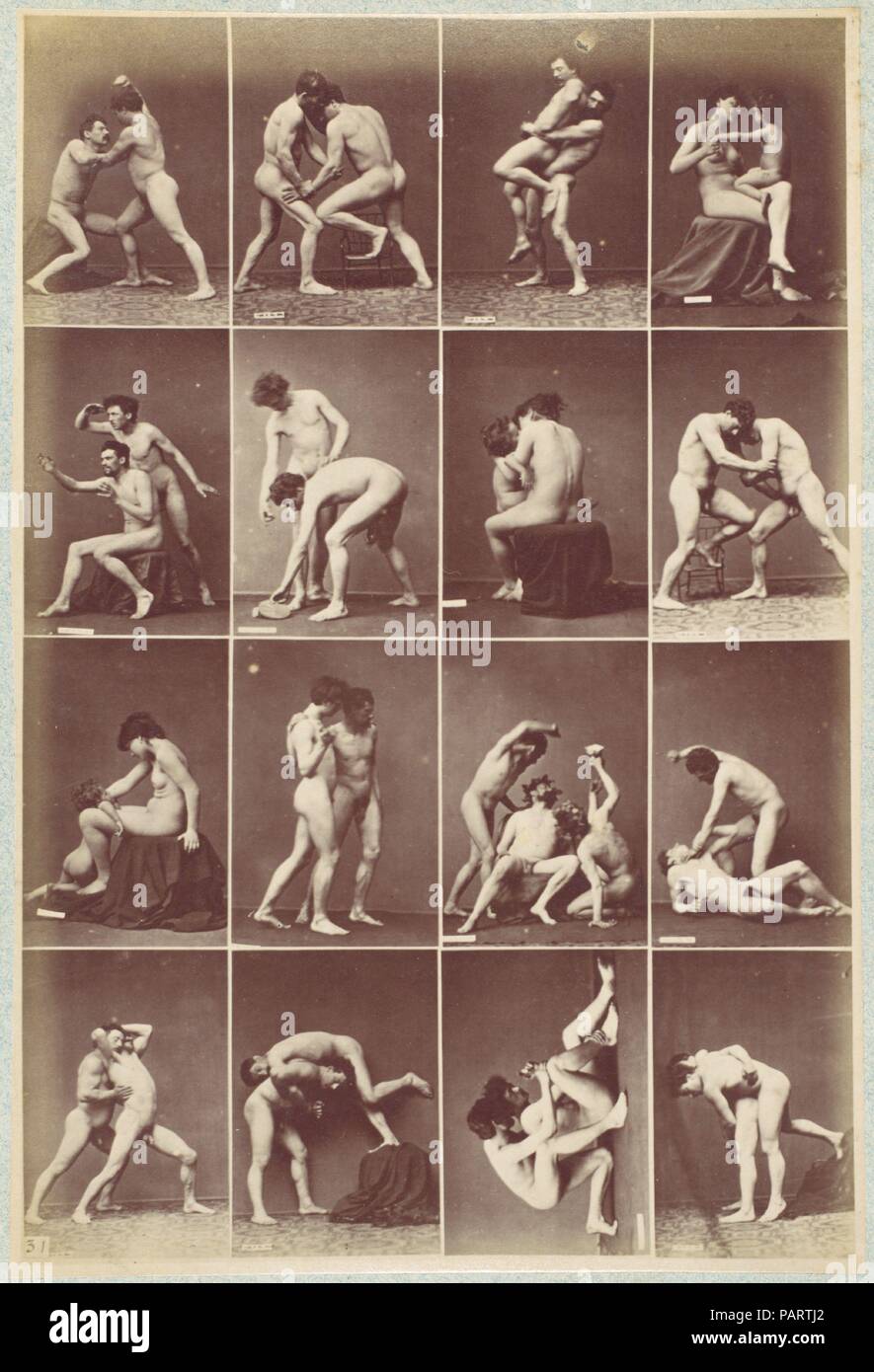 Album d'Études-Poses. Artist: Louis Igout (French, 1837-1881). Editor: A. Calavas (French). Date: ca. 1880. This album is an excellent example of the type of photography produced in the nineteenth century as an aid to artists in the study of contour, modeling, and proportion, and as a vocabulary of expression, gesture, and pose sanctioned by the art of antiquity and the Old Masters. Groupings representing Cain and Abel, the Drunken Silenus, Hercules and Antaeus, the Dying Gaul, the Cnidian Aphrodite, and others are recognizable among the photographs. Single prints showing sixteen small images Stock Photohttps://www.alamy.com/image-license-details/?v=1https://www.alamy.com/album-dtudes-poses-artist-louis-igout-french-1837-1881-editor-a-calavas-french-date-ca-1880-this-album-is-an-excellent-example-of-the-type-of-photography-produced-in-the-nineteenth-century-as-an-aid-to-artists-in-the-study-of-contour-modeling-and-proportion-and-as-a-vocabulary-of-expression-gesture-and-pose-sanctioned-by-the-art-of-antiquity-and-the-old-masters-groupings-representing-cain-and-abel-the-drunken-silenus-hercules-and-antaeus-the-dying-gaul-the-cnidian-aphrodite-and-others-are-recognizable-among-the-photographs-single-prints-showing-sixteen-small-images-image213195194.html
Album d'Études-Poses. Artist: Louis Igout (French, 1837-1881). Editor: A. Calavas (French). Date: ca. 1880. This album is an excellent example of the type of photography produced in the nineteenth century as an aid to artists in the study of contour, modeling, and proportion, and as a vocabulary of expression, gesture, and pose sanctioned by the art of antiquity and the Old Masters. Groupings representing Cain and Abel, the Drunken Silenus, Hercules and Antaeus, the Dying Gaul, the Cnidian Aphrodite, and others are recognizable among the photographs. Single prints showing sixteen small images Stock Photohttps://www.alamy.com/image-license-details/?v=1https://www.alamy.com/album-dtudes-poses-artist-louis-igout-french-1837-1881-editor-a-calavas-french-date-ca-1880-this-album-is-an-excellent-example-of-the-type-of-photography-produced-in-the-nineteenth-century-as-an-aid-to-artists-in-the-study-of-contour-modeling-and-proportion-and-as-a-vocabulary-of-expression-gesture-and-pose-sanctioned-by-the-art-of-antiquity-and-the-old-masters-groupings-representing-cain-and-abel-the-drunken-silenus-hercules-and-antaeus-the-dying-gaul-the-cnidian-aphrodite-and-others-are-recognizable-among-the-photographs-single-prints-showing-sixteen-small-images-image213195194.htmlRMPARTJ2–Album d'Études-Poses. Artist: Louis Igout (French, 1837-1881). Editor: A. Calavas (French). Date: ca. 1880. This album is an excellent example of the type of photography produced in the nineteenth century as an aid to artists in the study of contour, modeling, and proportion, and as a vocabulary of expression, gesture, and pose sanctioned by the art of antiquity and the Old Masters. Groupings representing Cain and Abel, the Drunken Silenus, Hercules and Antaeus, the Dying Gaul, the Cnidian Aphrodite, and others are recognizable among the photographs. Single prints showing sixteen small images
 . Samuel F.B. Morse: his letters and journals. Edited and supplemented by his son Edward Lind Morse; illustrated with reporductions of his paintings and with notes and diagrams bearing on the invention of the telegraph. icture of the* Dying Hercules, of colossal size, and sent it, in May,1813, to the Royal Academy Exhibition at SomersetHouse. The picture was well received. A critic of one of theJournals of that day in speaking of the Royal Academythus notices Morse: — • *0f the academicians two or three have distinguishedthemselves in a preeminent degree; besides, few haveadded much to their f Stock Photohttps://www.alamy.com/image-license-details/?v=1https://www.alamy.com/samuel-fb-morse-his-letters-and-journals-edited-and-supplemented-by-his-son-edward-lind-morse-illustrated-with-reporductions-of-his-paintings-and-with-notes-and-diagrams-bearing-on-the-invention-of-the-telegraph-icture-of-the-dying-hercules-of-colossal-size-and-sent-it-in-may1813-to-the-royal-academy-exhibition-at-somersethouse-the-picture-was-well-received-a-critic-of-one-of-thejournals-of-that-day-in-speaking-of-the-royal-academythus-notices-morse-0f-the-academicians-two-or-three-have-distinguishedthemselves-in-a-preeminent-degree-besides-few-haveadded-much-to-their-f-image336619939.html
. Samuel F.B. Morse: his letters and journals. Edited and supplemented by his son Edward Lind Morse; illustrated with reporductions of his paintings and with notes and diagrams bearing on the invention of the telegraph. icture of the* Dying Hercules, of colossal size, and sent it, in May,1813, to the Royal Academy Exhibition at SomersetHouse. The picture was well received. A critic of one of theJournals of that day in speaking of the Royal Academythus notices Morse: — • *0f the academicians two or three have distinguishedthemselves in a preeminent degree; besides, few haveadded much to their f Stock Photohttps://www.alamy.com/image-license-details/?v=1https://www.alamy.com/samuel-fb-morse-his-letters-and-journals-edited-and-supplemented-by-his-son-edward-lind-morse-illustrated-with-reporductions-of-his-paintings-and-with-notes-and-diagrams-bearing-on-the-invention-of-the-telegraph-icture-of-the-dying-hercules-of-colossal-size-and-sent-it-in-may1813-to-the-royal-academy-exhibition-at-somersethouse-the-picture-was-well-received-a-critic-of-one-of-thejournals-of-that-day-in-speaking-of-the-royal-academythus-notices-morse-0f-the-academicians-two-or-three-have-distinguishedthemselves-in-a-preeminent-degree-besides-few-haveadded-much-to-their-f-image336619939.htmlRM2AFJA4K–. Samuel F.B. Morse: his letters and journals. Edited and supplemented by his son Edward Lind Morse; illustrated with reporductions of his paintings and with notes and diagrams bearing on the invention of the telegraph. icture of the* Dying Hercules, of colossal size, and sent it, in May,1813, to the Royal Academy Exhibition at SomersetHouse. The picture was well received. A critic of one of theJournals of that day in speaking of the Royal Academythus notices Morse: — • *0f the academicians two or three have distinguishedthemselves in a preeminent degree; besides, few haveadded much to their f
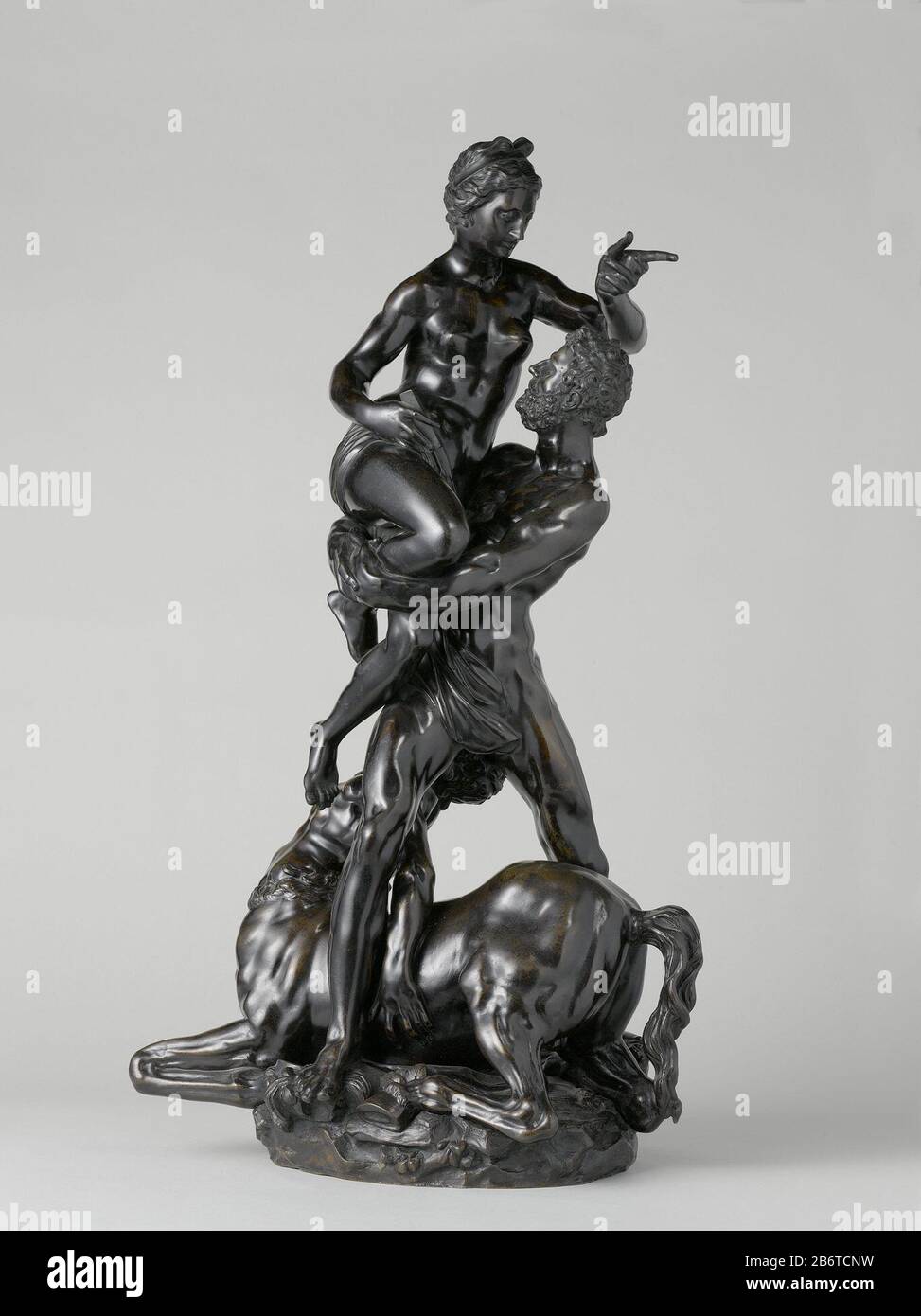 Hercules bevrijdt Deianeira van de centaur Nessus Hercules bevrijdt Deianeira van de centaur Nessus Object Type : beeldhouwwerk Objectnummer: BK-1957-2 Manufacturer : beeldhouwer: Adriaen de Vries (naar) Dating: 1600 - 1625 Material: brons Dimensions: h 78,5 cm. × b 45,5 cm. × d 31 cm. Subject: Hercules and Deianira with the dying Nessus Stock Photohttps://www.alamy.com/image-license-details/?v=1https://www.alamy.com/hercules-bevrijdt-deianeira-van-de-centaur-nessus-hercules-bevrijdt-deianeira-van-de-centaur-nessus-object-type-beeldhouwwerk-objectnummer-bk-1957-2-manufacturer-beeldhouwer-adriaen-de-vries-naar-dating-1600-1625-material-brons-dimensions-h-785-cm-b-455-cm-d-31-cm-subject-hercules-and-deianira-with-the-dying-nessus-image348432165.html
Hercules bevrijdt Deianeira van de centaur Nessus Hercules bevrijdt Deianeira van de centaur Nessus Object Type : beeldhouwwerk Objectnummer: BK-1957-2 Manufacturer : beeldhouwer: Adriaen de Vries (naar) Dating: 1600 - 1625 Material: brons Dimensions: h 78,5 cm. × b 45,5 cm. × d 31 cm. Subject: Hercules and Deianira with the dying Nessus Stock Photohttps://www.alamy.com/image-license-details/?v=1https://www.alamy.com/hercules-bevrijdt-deianeira-van-de-centaur-nessus-hercules-bevrijdt-deianeira-van-de-centaur-nessus-object-type-beeldhouwwerk-objectnummer-bk-1957-2-manufacturer-beeldhouwer-adriaen-de-vries-naar-dating-1600-1625-material-brons-dimensions-h-785-cm-b-455-cm-d-31-cm-subject-hercules-and-deianira-with-the-dying-nessus-image348432165.htmlRM2B6TCNW–Hercules bevrijdt Deianeira van de centaur Nessus Hercules bevrijdt Deianeira van de centaur Nessus Object Type : beeldhouwwerk Objectnummer: BK-1957-2 Manufacturer : beeldhouwer: Adriaen de Vries (naar) Dating: 1600 - 1625 Material: brons Dimensions: h 78,5 cm. × b 45,5 cm. × d 31 cm. Subject: Hercules and Deianira with the dying Nessus
 Hercules frees Deianeira from the centaur Nessus, Hercules and Deianira with the dying Nessus, Adriaen de Vries (after), 1600 - 1625, bronze (metal), h 78.5 cm × w 45.5 cm × d 31 cm, Reimagined by Gibon, design of warm cheerful glowing of brightness and light rays radiance. Classic art reinvented with a modern twist. Photography inspired by futurism, embracing dynamic energy of modern technology, movement, speed and revolutionize culture. Stock Photohttps://www.alamy.com/image-license-details/?v=1https://www.alamy.com/hercules-frees-deianeira-from-the-centaur-nessus-hercules-and-deianira-with-the-dying-nessus-adriaen-de-vries-after-1600-1625-bronze-metal-h-785-cm-w-455-cm-d-31-cm-reimagined-by-gibon-design-of-warm-cheerful-glowing-of-brightness-and-light-rays-radiance-classic-art-reinvented-with-a-modern-twist-photography-inspired-by-futurism-embracing-dynamic-energy-of-modern-technology-movement-speed-and-revolutionize-culture-image349951151.html
Hercules frees Deianeira from the centaur Nessus, Hercules and Deianira with the dying Nessus, Adriaen de Vries (after), 1600 - 1625, bronze (metal), h 78.5 cm × w 45.5 cm × d 31 cm, Reimagined by Gibon, design of warm cheerful glowing of brightness and light rays radiance. Classic art reinvented with a modern twist. Photography inspired by futurism, embracing dynamic energy of modern technology, movement, speed and revolutionize culture. Stock Photohttps://www.alamy.com/image-license-details/?v=1https://www.alamy.com/hercules-frees-deianeira-from-the-centaur-nessus-hercules-and-deianira-with-the-dying-nessus-adriaen-de-vries-after-1600-1625-bronze-metal-h-785-cm-w-455-cm-d-31-cm-reimagined-by-gibon-design-of-warm-cheerful-glowing-of-brightness-and-light-rays-radiance-classic-art-reinvented-with-a-modern-twist-photography-inspired-by-futurism-embracing-dynamic-energy-of-modern-technology-movement-speed-and-revolutionize-culture-image349951151.htmlRF2B99J7B–Hercules frees Deianeira from the centaur Nessus, Hercules and Deianira with the dying Nessus, Adriaen de Vries (after), 1600 - 1625, bronze (metal), h 78.5 cm × w 45.5 cm × d 31 cm, Reimagined by Gibon, design of warm cheerful glowing of brightness and light rays radiance. Classic art reinvented with a modern twist. Photography inspired by futurism, embracing dynamic energy of modern technology, movement, speed and revolutionize culture.
 Roman era. Sarcophagus of Metilia Acte. From Pianebella, near Ostia. C. 161-170 CE. Wife of Gaius Junius Euhodus. Stock Photohttps://www.alamy.com/image-license-details/?v=1https://www.alamy.com/stock-photo-roman-era-sarcophagus-of-metilia-acte-from-pianebella-near-ostia-c-79109186.html
Roman era. Sarcophagus of Metilia Acte. From Pianebella, near Ostia. C. 161-170 CE. Wife of Gaius Junius Euhodus. Stock Photohttps://www.alamy.com/image-license-details/?v=1https://www.alamy.com/stock-photo-roman-era-sarcophagus-of-metilia-acte-from-pianebella-near-ostia-c-79109186.htmlRMEGKMG2–Roman era. Sarcophagus of Metilia Acte. From Pianebella, near Ostia. C. 161-170 CE. Wife of Gaius Junius Euhodus.
 Nessus, 1930. Stock Photohttps://www.alamy.com/image-license-details/?v=1https://www.alamy.com/nessus-1930-image575135798.html
Nessus, 1930. Stock Photohttps://www.alamy.com/image-license-details/?v=1https://www.alamy.com/nessus-1930-image575135798.htmlRM2TBKKG6–Nessus, 1930.
 The Imperial Austro-Hungarian Baths in Romanian Baile Herculane Stock Photohttps://www.alamy.com/image-license-details/?v=1https://www.alamy.com/the-imperial-austro-hungarian-baths-in-romanian-baile-herculane-image450268410.html
The Imperial Austro-Hungarian Baths in Romanian Baile Herculane Stock Photohttps://www.alamy.com/image-license-details/?v=1https://www.alamy.com/the-imperial-austro-hungarian-baths-in-romanian-baile-herculane-image450268410.htmlRM2H4FDXJ–The Imperial Austro-Hungarian Baths in Romanian Baile Herculane
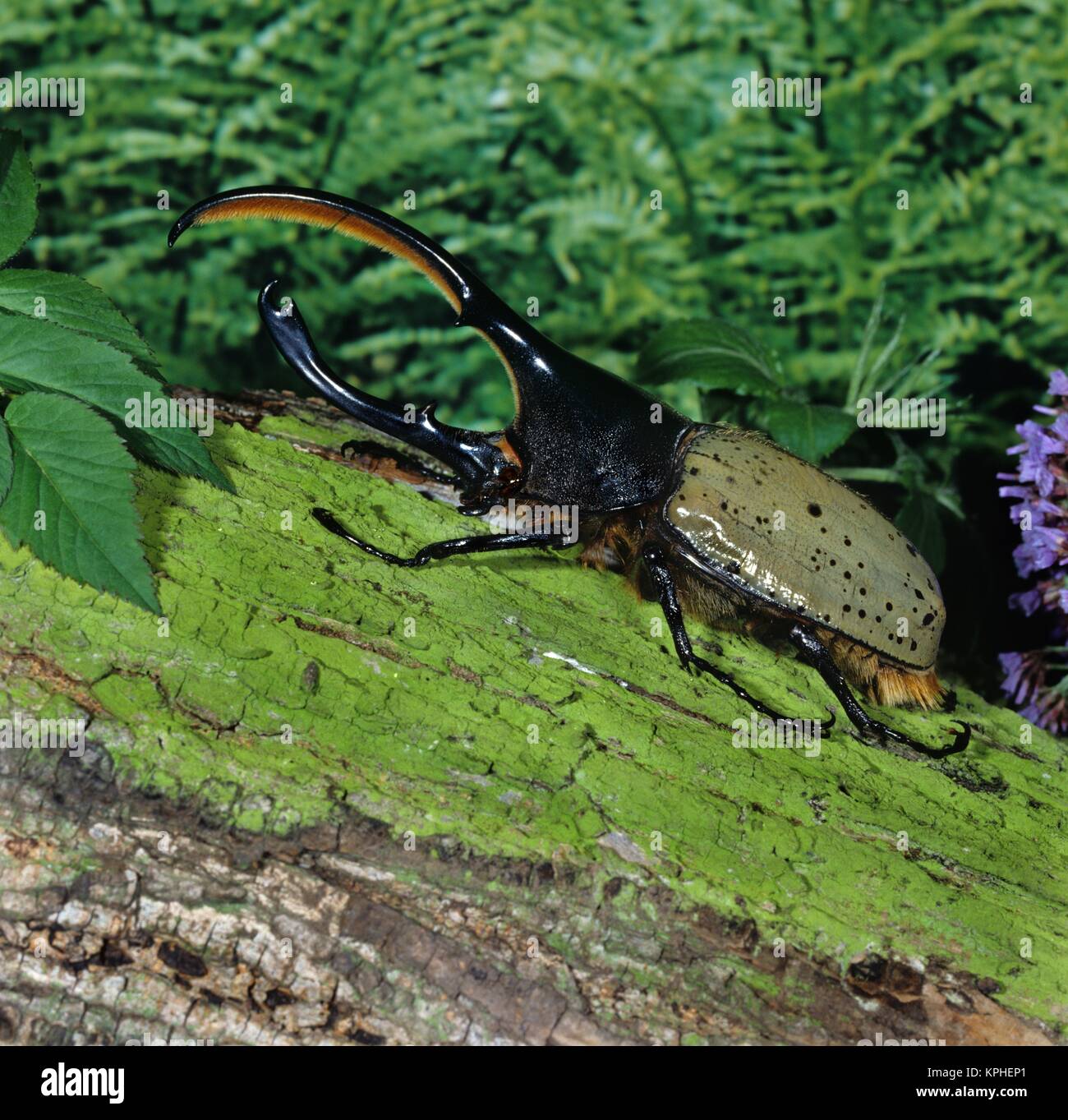 Herkuleskäfer, männlich aus den Wäldern Mittelamerikas. Das Männchen misst bis zu 17cm. Stock Photohttps://www.alamy.com/image-license-details/?v=1https://www.alamy.com/stock-image-herkuleskfer-mnnlich-aus-den-wldern-mittelamerikas-das-mnnchen-misst-168800521.html
Herkuleskäfer, männlich aus den Wäldern Mittelamerikas. Das Männchen misst bis zu 17cm. Stock Photohttps://www.alamy.com/image-license-details/?v=1https://www.alamy.com/stock-image-herkuleskfer-mnnlich-aus-den-wldern-mittelamerikas-das-mnnchen-misst-168800521.htmlRFKPHEP1–Herkuleskäfer, männlich aus den Wäldern Mittelamerikas. Das Männchen misst bis zu 17cm.
 Hercules Slaying the Centaur Eurytion Hercules beats the centaur Eurytion, The bearded Hercules stands on a rocky ground astride the crashed Eurytion, which he grabs with his left hand at the head turned away from him, while the raised right club. The Eurytion, lowered by the forelegs, and with its head and upper body deflecting sideways, attempts to release its head from Hercules' grip with one hand and has placed the other against its chest. His bearded face has left, the mouth opened, Hercules and Deianira with the dying Nessus (variant), Nessus, Giambologna (after), Florence (possibly) Stock Photohttps://www.alamy.com/image-license-details/?v=1https://www.alamy.com/hercules-slaying-the-centaur-eurytion-hercules-beats-the-centaur-eurytion-the-bearded-hercules-stands-on-a-rocky-ground-astride-the-crashed-eurytion-which-he-grabs-with-his-left-hand-at-the-head-turned-away-from-him-while-the-raised-right-club-the-eurytion-lowered-by-the-forelegs-and-with-its-head-and-upper-body-deflecting-sideways-attempts-to-release-its-head-from-hercules-grip-with-one-hand-and-has-placed-the-other-against-its-chest-his-bearded-face-has-left-the-mouth-opened-hercules-and-deianira-with-the-dying-nessus-variant-nessus-giambologna-after-florence-possibly-image261331455.html
Hercules Slaying the Centaur Eurytion Hercules beats the centaur Eurytion, The bearded Hercules stands on a rocky ground astride the crashed Eurytion, which he grabs with his left hand at the head turned away from him, while the raised right club. The Eurytion, lowered by the forelegs, and with its head and upper body deflecting sideways, attempts to release its head from Hercules' grip with one hand and has placed the other against its chest. His bearded face has left, the mouth opened, Hercules and Deianira with the dying Nessus (variant), Nessus, Giambologna (after), Florence (possibly) Stock Photohttps://www.alamy.com/image-license-details/?v=1https://www.alamy.com/hercules-slaying-the-centaur-eurytion-hercules-beats-the-centaur-eurytion-the-bearded-hercules-stands-on-a-rocky-ground-astride-the-crashed-eurytion-which-he-grabs-with-his-left-hand-at-the-head-turned-away-from-him-while-the-raised-right-club-the-eurytion-lowered-by-the-forelegs-and-with-its-head-and-upper-body-deflecting-sideways-attempts-to-release-its-head-from-hercules-grip-with-one-hand-and-has-placed-the-other-against-its-chest-his-bearded-face-has-left-the-mouth-opened-hercules-and-deianira-with-the-dying-nessus-variant-nessus-giambologna-after-florence-possibly-image261331455.htmlRMW54JX7–Hercules Slaying the Centaur Eurytion Hercules beats the centaur Eurytion, The bearded Hercules stands on a rocky ground astride the crashed Eurytion, which he grabs with his left hand at the head turned away from him, while the raised right club. The Eurytion, lowered by the forelegs, and with its head and upper body deflecting sideways, attempts to release its head from Hercules' grip with one hand and has placed the other against its chest. His bearded face has left, the mouth opened, Hercules and Deianira with the dying Nessus (variant), Nessus, Giambologna (after), Florence (possibly)
 Medal Commemorating the Model of the Dying Hercules. Engraver: Thomas Wyon II, British, 1792–1817Honorand: Samuel Finley Breese Morse, American, 1791–1872, B.A. 1810, M.A. 1816, LL.D. 1846Manufacturer: Royal Society of Arts Stock Photohttps://www.alamy.com/image-license-details/?v=1https://www.alamy.com/medal-commemorating-the-model-of-the-dyinghercules-engraver-thomas-wyon-ii-british-17921817honorand-samuel-finley-breese-morse-american-17911872-ba-1810-ma-1816-lld-1846manufacturer-royal-society-of-arts-image463233230.html
Medal Commemorating the Model of the Dying Hercules. Engraver: Thomas Wyon II, British, 1792–1817Honorand: Samuel Finley Breese Morse, American, 1791–1872, B.A. 1810, M.A. 1816, LL.D. 1846Manufacturer: Royal Society of Arts Stock Photohttps://www.alamy.com/image-license-details/?v=1https://www.alamy.com/medal-commemorating-the-model-of-the-dyinghercules-engraver-thomas-wyon-ii-british-17921817honorand-samuel-finley-breese-morse-american-17911872-ba-1810-ma-1816-lld-1846manufacturer-royal-society-of-arts-image463233230.htmlRM2HWJ2KX–Medal Commemorating the Model of the Dying Hercules. Engraver: Thomas Wyon II, British, 1792–1817Honorand: Samuel Finley Breese Morse, American, 1791–1872, B.A. 1810, M.A. 1816, LL.D. 1846Manufacturer: Royal Society of Arts
 Photo production of the painting 'Mort de Nessus' by Jules-élie Delaunay, Goupil & Cie., After Jules-élie Delaunay, c. 1878 - in or before 1883 photomechanical print paper Hercules and Deianira with the dying Nessus Stock Photohttps://www.alamy.com/image-license-details/?v=1https://www.alamy.com/photo-production-of-the-painting-mort-de-nessus-by-jules-lie-delaunay-goupil-cie-after-jules-lie-delaunay-c-1878-in-or-before-1883-photomechanical-print-paper-hercules-and-deianira-with-the-dying-nessus-image592632547.html
Photo production of the painting 'Mort de Nessus' by Jules-élie Delaunay, Goupil & Cie., After Jules-élie Delaunay, c. 1878 - in or before 1883 photomechanical print paper Hercules and Deianira with the dying Nessus Stock Photohttps://www.alamy.com/image-license-details/?v=1https://www.alamy.com/photo-production-of-the-painting-mort-de-nessus-by-jules-lie-delaunay-goupil-cie-after-jules-lie-delaunay-c-1878-in-or-before-1883-photomechanical-print-paper-hercules-and-deianira-with-the-dying-nessus-image592632547.htmlRM2WC4MT3–Photo production of the painting 'Mort de Nessus' by Jules-élie Delaunay, Goupil & Cie., After Jules-élie Delaunay, c. 1878 - in or before 1883 photomechanical print paper Hercules and Deianira with the dying Nessus
 Art in America; a critical and historical sketch . JEREMIAH. [WASHINGTON ALLSTON.J artist, and gave evidence of succeeding both in sculpture and painting.Although his preference was for the latter, we are inclined to think thathe was best fitted to be a sculptor. He became the pupil of Allston inLondon, and modelled at that time a statue called the Dying Hercules,which won the prize of a gold medal offered by the Adelphi Society ofArts for the best single figure. From that statue he afterward composeda painting of the same subject, which is now in Xew Haven, a work ofunquestioned power, showin Stock Photohttps://www.alamy.com/image-license-details/?v=1https://www.alamy.com/art-in-america-a-critical-and-historical-sketch-jeremiah-washington-allstonj-artist-and-gave-evidence-of-succeeding-both-in-sculpture-and-paintingalthough-his-preference-was-for-the-latter-we-are-inclined-to-think-thathe-was-best-fitted-to-be-a-sculptor-he-became-the-pupil-of-allston-inlondon-and-modelled-at-that-time-a-statue-called-the-dying-herculeswhich-won-the-prize-of-a-gold-medal-offered-by-the-adelphi-society-ofarts-for-the-best-single-figure-from-that-statue-he-afterward-composeda-painting-of-the-same-subject-which-is-now-in-xew-haven-a-work-ofunquestioned-power-showin-image338912980.html
Art in America; a critical and historical sketch . JEREMIAH. [WASHINGTON ALLSTON.J artist, and gave evidence of succeeding both in sculpture and painting.Although his preference was for the latter, we are inclined to think thathe was best fitted to be a sculptor. He became the pupil of Allston inLondon, and modelled at that time a statue called the Dying Hercules,which won the prize of a gold medal offered by the Adelphi Society ofArts for the best single figure. From that statue he afterward composeda painting of the same subject, which is now in Xew Haven, a work ofunquestioned power, showin Stock Photohttps://www.alamy.com/image-license-details/?v=1https://www.alamy.com/art-in-america-a-critical-and-historical-sketch-jeremiah-washington-allstonj-artist-and-gave-evidence-of-succeeding-both-in-sculpture-and-paintingalthough-his-preference-was-for-the-latter-we-are-inclined-to-think-thathe-was-best-fitted-to-be-a-sculptor-he-became-the-pupil-of-allston-inlondon-and-modelled-at-that-time-a-statue-called-the-dying-herculeswhich-won-the-prize-of-a-gold-medal-offered-by-the-adelphi-society-ofarts-for-the-best-single-figure-from-that-statue-he-afterward-composeda-painting-of-the-same-subject-which-is-now-in-xew-haven-a-work-ofunquestioned-power-showin-image338912980.htmlRM2AKAPY0–Art in America; a critical and historical sketch . JEREMIAH. [WASHINGTON ALLSTON.J artist, and gave evidence of succeeding both in sculpture and painting.Although his preference was for the latter, we are inclined to think thathe was best fitted to be a sculptor. He became the pupil of Allston inLondon, and modelled at that time a statue called the Dying Hercules,which won the prize of a gold medal offered by the Adelphi Society ofArts for the best single figure. From that statue he afterward composeda painting of the same subject, which is now in Xew Haven, a work ofunquestioned power, showin
 Album d'Études–Poses ca. 1880 Louis Igout French This album is an excellent example of the type of photography produced in the nineteenth century as an aid to artists in the study of contour, modeling, and proportion, and as a vocabulary of expression, gesture, and pose sanctioned by the art of antiquity and the Old Masters. Groupings representing Cain and Abel, the Drunken Silenus, Hercules and Antaeus, the Dying Gaul, the Cnidian Aphrodite, and others are recognizable among the photographs. Single prints showing sixteen small images, such as the page shown here, served as a type of stock cat Stock Photohttps://www.alamy.com/image-license-details/?v=1https://www.alamy.com/album-dtudesposes-ca-1880-louis-igout-french-this-album-is-an-excellent-example-of-the-type-of-photography-produced-in-the-nineteenth-century-as-an-aid-to-artists-in-the-study-of-contour-modeling-and-proportion-and-as-a-vocabulary-of-expression-gesture-and-pose-sanctioned-by-the-art-of-antiquity-and-the-old-masters-groupings-representing-cain-and-abel-the-drunken-silenus-hercules-and-antaeus-the-dying-gaul-the-cnidian-aphrodite-and-others-are-recognizable-among-the-photographs-single-prints-showing-sixteen-small-images-such-as-the-page-shown-here-served-as-a-type-of-stock-cat-image458053455.html
Album d'Études–Poses ca. 1880 Louis Igout French This album is an excellent example of the type of photography produced in the nineteenth century as an aid to artists in the study of contour, modeling, and proportion, and as a vocabulary of expression, gesture, and pose sanctioned by the art of antiquity and the Old Masters. Groupings representing Cain and Abel, the Drunken Silenus, Hercules and Antaeus, the Dying Gaul, the Cnidian Aphrodite, and others are recognizable among the photographs. Single prints showing sixteen small images, such as the page shown here, served as a type of stock cat Stock Photohttps://www.alamy.com/image-license-details/?v=1https://www.alamy.com/album-dtudesposes-ca-1880-louis-igout-french-this-album-is-an-excellent-example-of-the-type-of-photography-produced-in-the-nineteenth-century-as-an-aid-to-artists-in-the-study-of-contour-modeling-and-proportion-and-as-a-vocabulary-of-expression-gesture-and-pose-sanctioned-by-the-art-of-antiquity-and-the-old-masters-groupings-representing-cain-and-abel-the-drunken-silenus-hercules-and-antaeus-the-dying-gaul-the-cnidian-aphrodite-and-others-are-recognizable-among-the-photographs-single-prints-showing-sixteen-small-images-such-as-the-page-shown-here-served-as-a-type-of-stock-cat-image458053455.htmlRM2HH63RY–Album d'Études–Poses ca. 1880 Louis Igout French This album is an excellent example of the type of photography produced in the nineteenth century as an aid to artists in the study of contour, modeling, and proportion, and as a vocabulary of expression, gesture, and pose sanctioned by the art of antiquity and the Old Masters. Groupings representing Cain and Abel, the Drunken Silenus, Hercules and Antaeus, the Dying Gaul, the Cnidian Aphrodite, and others are recognizable among the photographs. Single prints showing sixteen small images, such as the page shown here, served as a type of stock cat
 Hercules Slaying the Centaur Eurytion Hercules beats the centaur Eurytion, The bearded Hercules stands on a rocky ground astride the crashed Eurytion, which he grabs with his left hand at the head turned away from him, while the raised right club. The Eurytion, lowered by the forelegs, and with its head and upper body deflecting sideways, attempts to release its head from Hercules' grip with one hand and has placed the other against its chest. His bearded face has left, the mouth opened, Hercules and Deianira with the dying Nessus (variant), Nessus, Giambologna (after), Florence (possibly), c. Stock Photohttps://www.alamy.com/image-license-details/?v=1https://www.alamy.com/hercules-slaying-the-centaur-eurytion-hercules-beats-the-centaur-eurytion-the-bearded-hercules-stands-on-a-rocky-ground-astride-the-crashed-eurytion-which-he-grabs-with-his-left-hand-at-the-head-turned-away-from-him-while-the-raised-right-club-the-eurytion-lowered-by-the-forelegs-and-with-its-head-and-upper-body-deflecting-sideways-attempts-to-release-its-head-from-hercules-grip-with-one-hand-and-has-placed-the-other-against-its-chest-his-bearded-face-has-left-the-mouth-opened-hercules-and-deianira-with-the-dying-nessus-variant-nessus-giambologna-after-florence-possibly-c-image349948153.html
Hercules Slaying the Centaur Eurytion Hercules beats the centaur Eurytion, The bearded Hercules stands on a rocky ground astride the crashed Eurytion, which he grabs with his left hand at the head turned away from him, while the raised right club. The Eurytion, lowered by the forelegs, and with its head and upper body deflecting sideways, attempts to release its head from Hercules' grip with one hand and has placed the other against its chest. His bearded face has left, the mouth opened, Hercules and Deianira with the dying Nessus (variant), Nessus, Giambologna (after), Florence (possibly), c. Stock Photohttps://www.alamy.com/image-license-details/?v=1https://www.alamy.com/hercules-slaying-the-centaur-eurytion-hercules-beats-the-centaur-eurytion-the-bearded-hercules-stands-on-a-rocky-ground-astride-the-crashed-eurytion-which-he-grabs-with-his-left-hand-at-the-head-turned-away-from-him-while-the-raised-right-club-the-eurytion-lowered-by-the-forelegs-and-with-its-head-and-upper-body-deflecting-sideways-attempts-to-release-its-head-from-hercules-grip-with-one-hand-and-has-placed-the-other-against-its-chest-his-bearded-face-has-left-the-mouth-opened-hercules-and-deianira-with-the-dying-nessus-variant-nessus-giambologna-after-florence-possibly-c-image349948153.htmlRF2B99EC9–Hercules Slaying the Centaur Eurytion Hercules beats the centaur Eurytion, The bearded Hercules stands on a rocky ground astride the crashed Eurytion, which he grabs with his left hand at the head turned away from him, while the raised right club. The Eurytion, lowered by the forelegs, and with its head and upper body deflecting sideways, attempts to release its head from Hercules' grip with one hand and has placed the other against its chest. His bearded face has left, the mouth opened, Hercules and Deianira with the dying Nessus (variant), Nessus, Giambologna (after), Florence (possibly), c.
 Heracles. Hero in a Greek mythology. Heracles slaying the Lernaean Hydra. Second Labour. Relief. National Museum of Roman Art. Merida. Spain.. Stock Photohttps://www.alamy.com/image-license-details/?v=1https://www.alamy.com/heracles-hero-in-a-greek-mythology-heracles-slaying-the-lernaean-hydra-second-labour-relief-national-museum-of-roman-art-merida-spain-image209611825.html
Heracles. Hero in a Greek mythology. Heracles slaying the Lernaean Hydra. Second Labour. Relief. National Museum of Roman Art. Merida. Spain.. Stock Photohttps://www.alamy.com/image-license-details/?v=1https://www.alamy.com/heracles-hero-in-a-greek-mythology-heracles-slaying-the-lernaean-hydra-second-labour-relief-national-museum-of-roman-art-merida-spain-image209611825.htmlRMP50J0H–Heracles. Hero in a Greek mythology. Heracles slaying the Lernaean Hydra. Second Labour. Relief. National Museum of Roman Art. Merida. Spain..
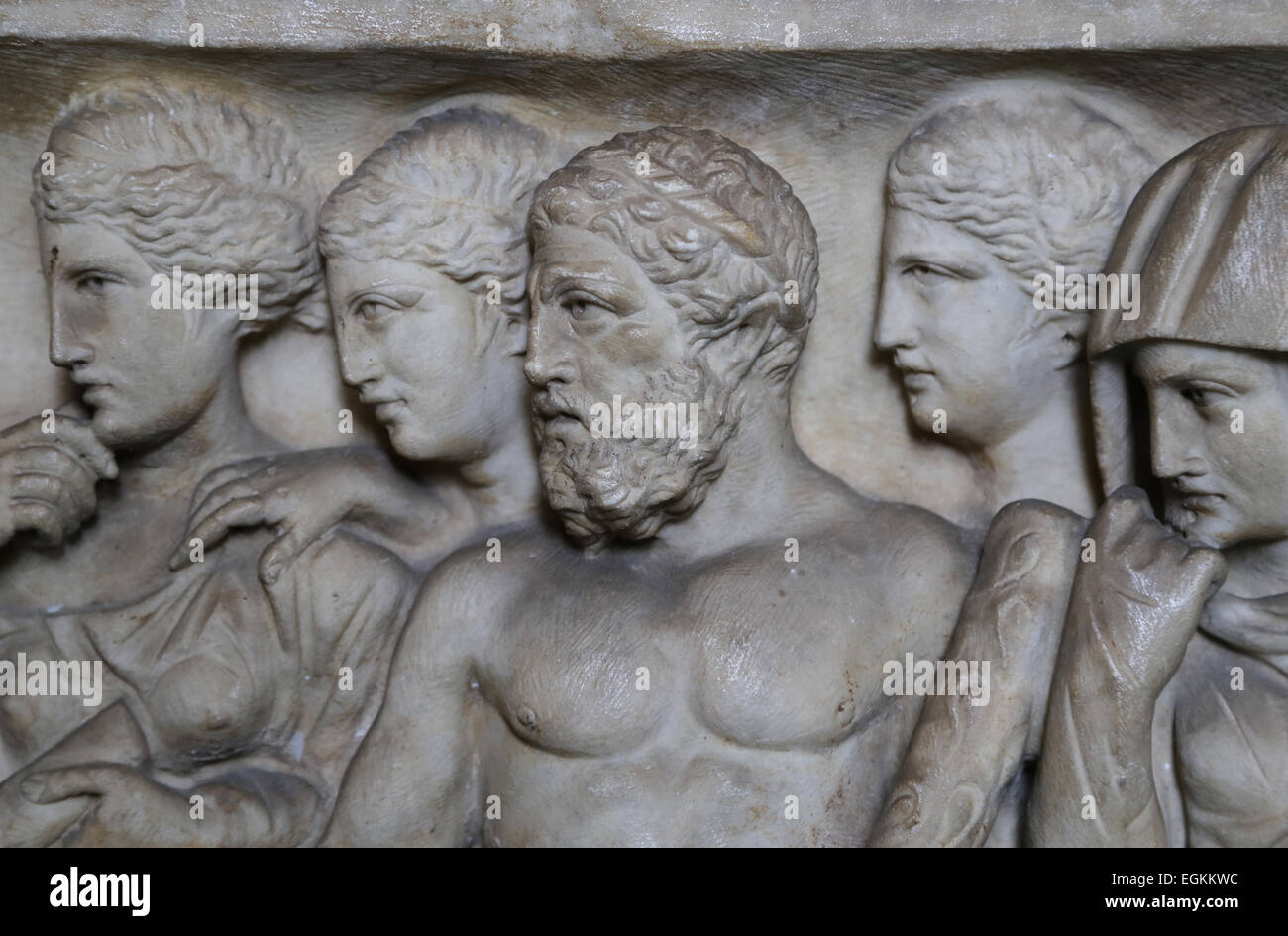 Roman era. Sarcophagus of Metilia Acte. C. 161-170 CE. Scene myth of Alcestis. Heracles rescued Alcestis from Hades. Vatican. Stock Photohttps://www.alamy.com/image-license-details/?v=1https://www.alamy.com/stock-photo-roman-era-sarcophagus-of-metilia-acte-c-161-170-ce-scene-myth-of-alcestis-79108664.html
Roman era. Sarcophagus of Metilia Acte. C. 161-170 CE. Scene myth of Alcestis. Heracles rescued Alcestis from Hades. Vatican. Stock Photohttps://www.alamy.com/image-license-details/?v=1https://www.alamy.com/stock-photo-roman-era-sarcophagus-of-metilia-acte-c-161-170-ce-scene-myth-of-alcestis-79108664.htmlRMEGKKWC–Roman era. Sarcophagus of Metilia Acte. C. 161-170 CE. Scene myth of Alcestis. Heracles rescued Alcestis from Hades. Vatican.
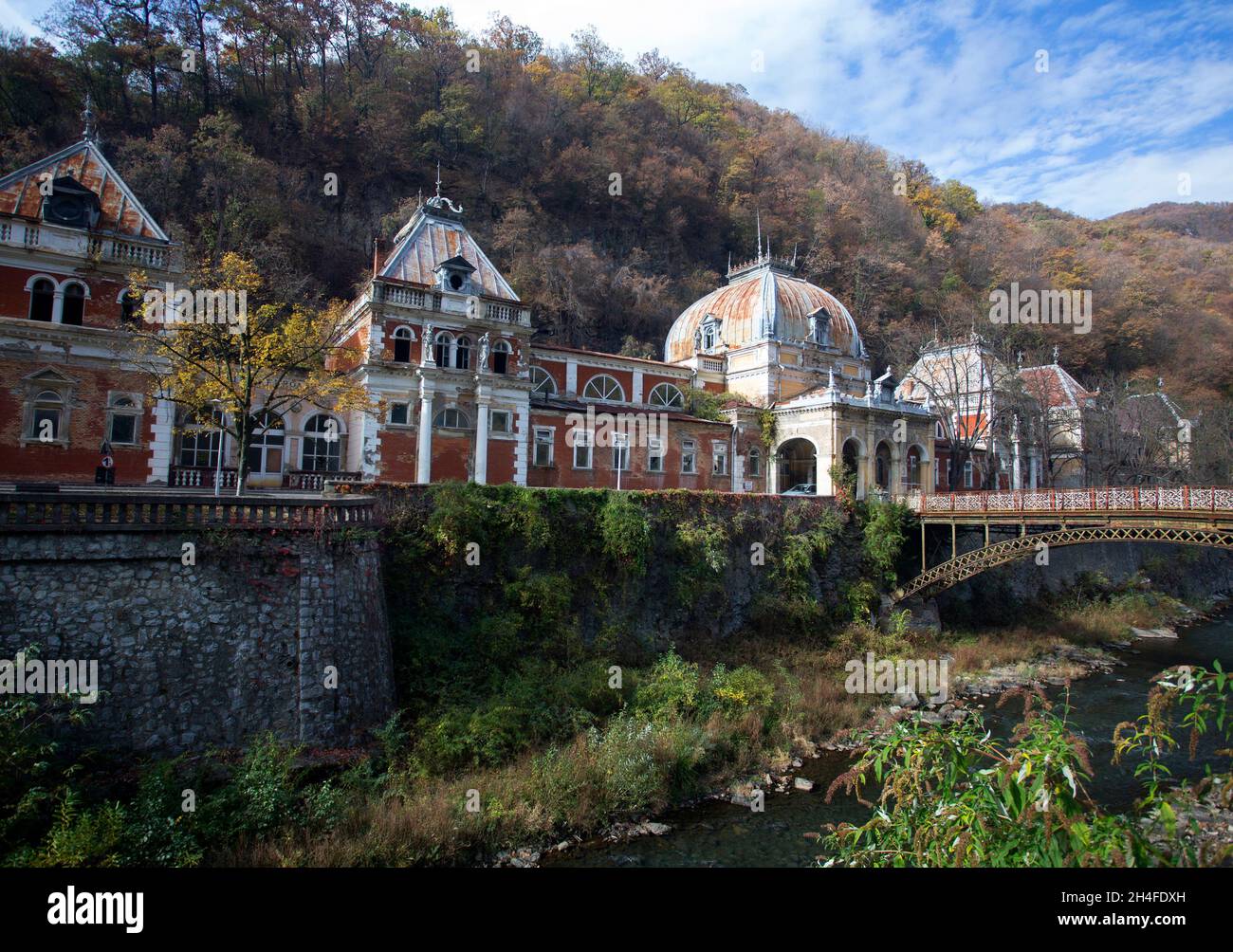 The Imperial Austro-Hungarian Baths in Romanian Baile Herculane Stock Photohttps://www.alamy.com/image-license-details/?v=1https://www.alamy.com/the-imperial-austro-hungarian-baths-in-romanian-baile-herculane-image450268409.html
The Imperial Austro-Hungarian Baths in Romanian Baile Herculane Stock Photohttps://www.alamy.com/image-license-details/?v=1https://www.alamy.com/the-imperial-austro-hungarian-baths-in-romanian-baile-herculane-image450268409.htmlRM2H4FDXH–The Imperial Austro-Hungarian Baths in Romanian Baile Herculane
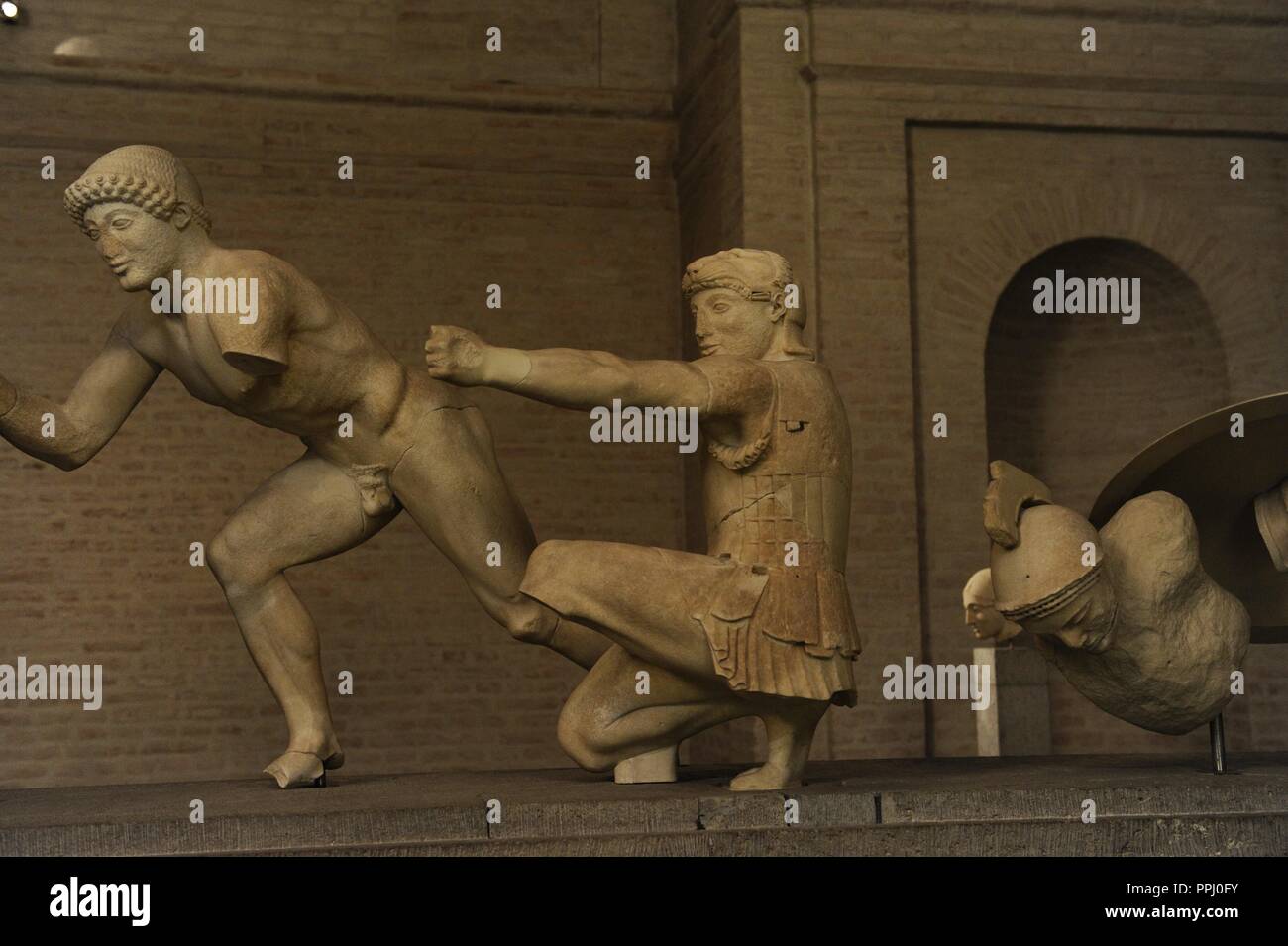 East Pediment's Group of the Temple of Aegina. Ca. 490 BC. First battle of Greeks and Trojans. Helper, kneeling archer, Herakles, and a injured warrior. Glyptothek Museum. Munich. Germany. Stock Photohttps://www.alamy.com/image-license-details/?v=1https://www.alamy.com/east-pediments-group-of-the-temple-of-aegina-ca-490-bc-first-battle-of-greeks-and-trojans-helper-kneeling-archer-herakles-and-a-injured-warrior-glyptothek-museum-munich-germany-image220442431.html
East Pediment's Group of the Temple of Aegina. Ca. 490 BC. First battle of Greeks and Trojans. Helper, kneeling archer, Herakles, and a injured warrior. Glyptothek Museum. Munich. Germany. Stock Photohttps://www.alamy.com/image-license-details/?v=1https://www.alamy.com/east-pediments-group-of-the-temple-of-aegina-ca-490-bc-first-battle-of-greeks-and-trojans-helper-kneeling-archer-herakles-and-a-injured-warrior-glyptothek-museum-munich-germany-image220442431.htmlRMPPJ0FY–East Pediment's Group of the Temple of Aegina. Ca. 490 BC. First battle of Greeks and Trojans. Helper, kneeling archer, Herakles, and a injured warrior. Glyptothek Museum. Munich. Germany.
 The Imperial Austro-Hungarian Baths in Romanian Baile Herculane Stock Photohttps://www.alamy.com/image-license-details/?v=1https://www.alamy.com/the-imperial-austro-hungarian-baths-in-romanian-baile-herculane-image450268411.html
The Imperial Austro-Hungarian Baths in Romanian Baile Herculane Stock Photohttps://www.alamy.com/image-license-details/?v=1https://www.alamy.com/the-imperial-austro-hungarian-baths-in-romanian-baile-herculane-image450268411.htmlRF2H4FDXK–The Imperial Austro-Hungarian Baths in Romanian Baile Herculane
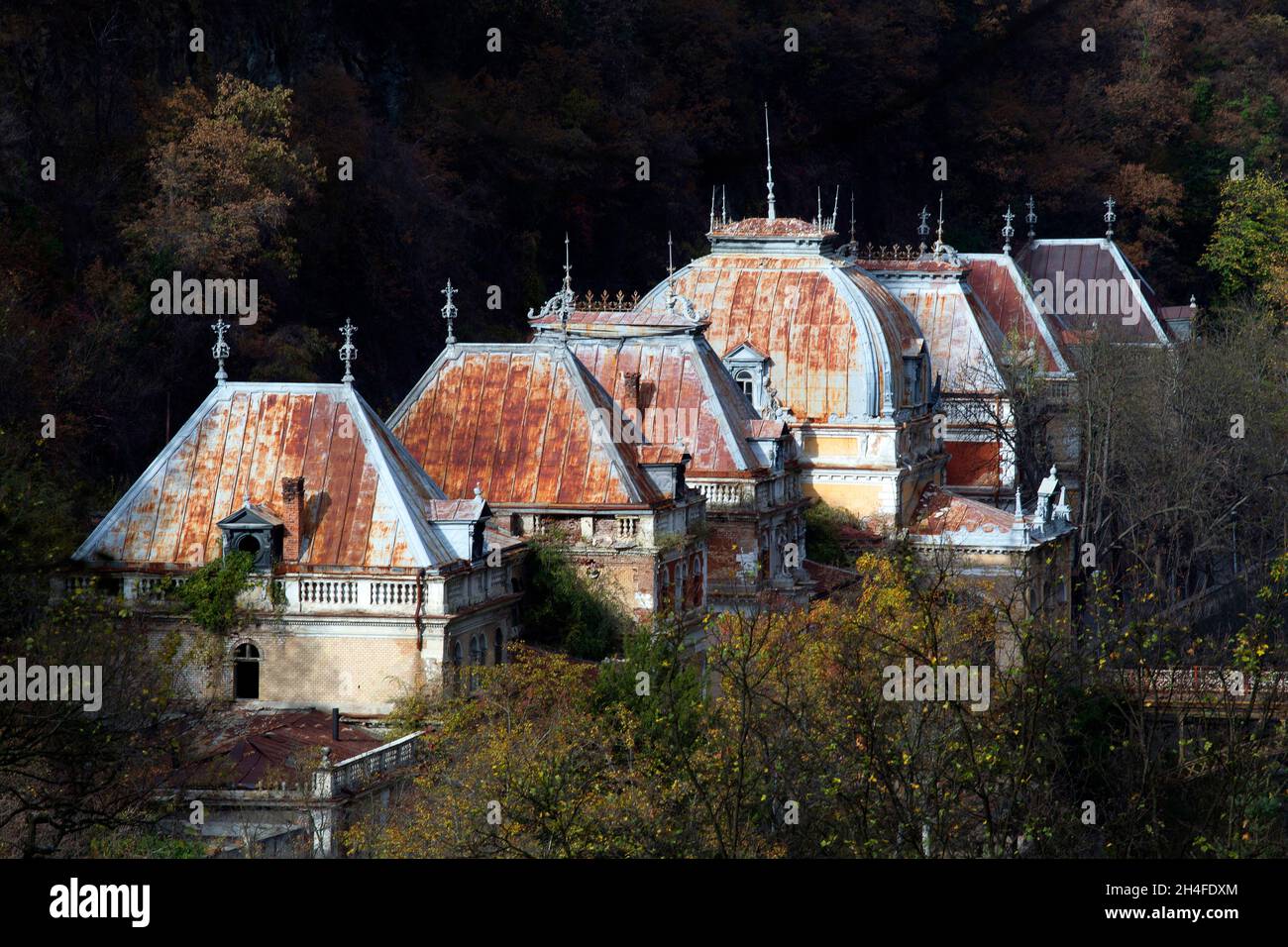 The Imperial Austro-Hungarian Baths in Romanian Baile Herculane Stock Photohttps://www.alamy.com/image-license-details/?v=1https://www.alamy.com/the-imperial-austro-hungarian-baths-in-romanian-baile-herculane-image450268412.html
The Imperial Austro-Hungarian Baths in Romanian Baile Herculane Stock Photohttps://www.alamy.com/image-license-details/?v=1https://www.alamy.com/the-imperial-austro-hungarian-baths-in-romanian-baile-herculane-image450268412.htmlRM2H4FDXM–The Imperial Austro-Hungarian Baths in Romanian Baile Herculane